Away from the city hustle, three ancient temples dating back to the 12th and 13th centuries still stand majestically in the village of Pillalamarri, Suryapet district, Telangana (Note: Pillalamarri referenced here is not the same as the one located in Mahbubnagar district of Telangana). Before the formation of new districts in Telangana in 2016, Pillalamarri village (the location of the aforementioned three temples) was under the Nalgonda district. Currently, Pillalamarri village is under the Suryapet district. They are the (Kacheswara, Kameswara and Nameswara) comprising Trikuta Alyam, Nameswara and Erakesvara temples, which are 153 km away from Hyderabad, 10 km away from Suryapet and 75 km away from Khammam Urban. All three of these temples predate the renowned Ramappa temple.
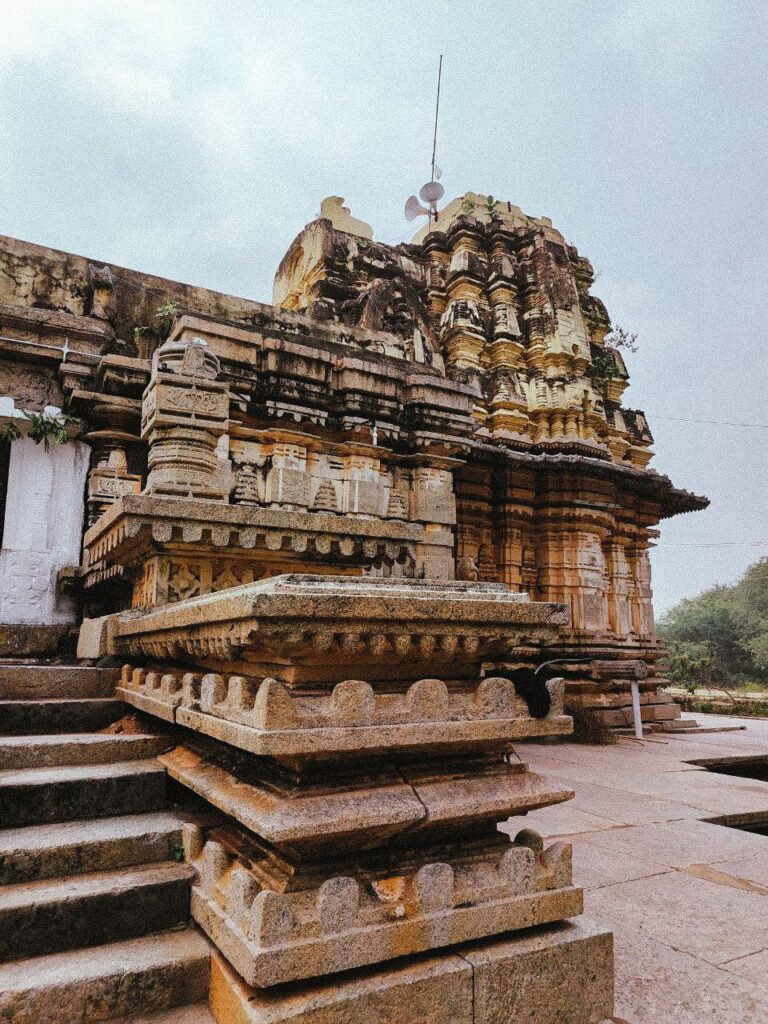

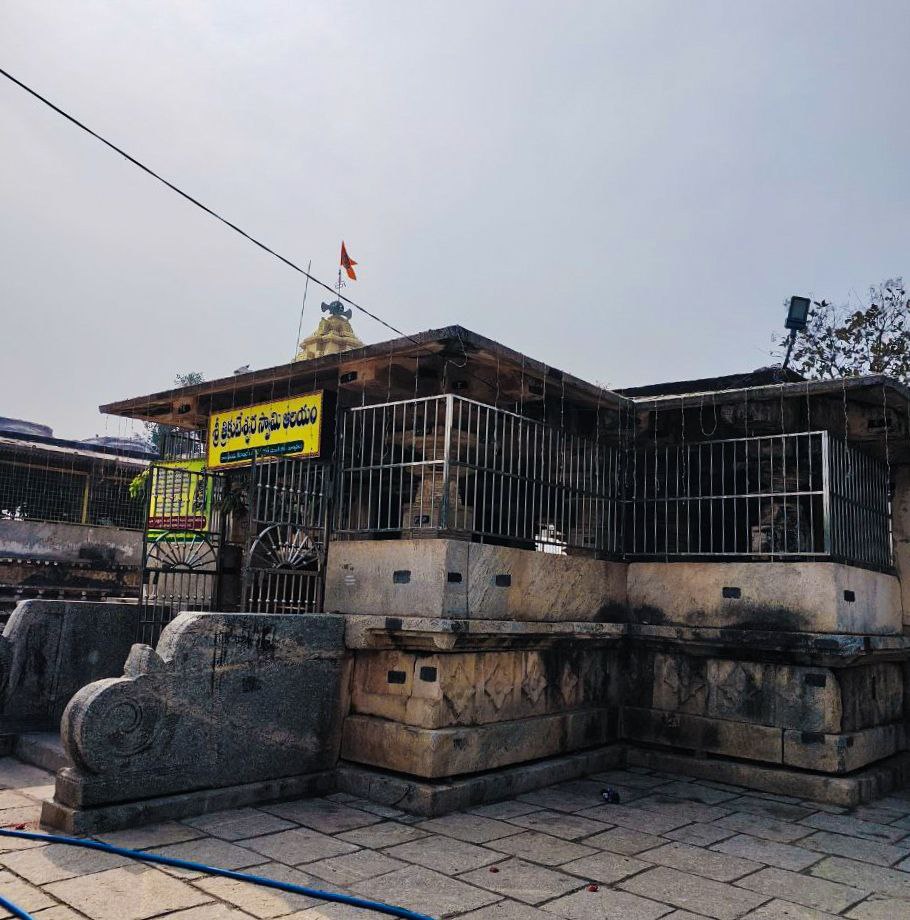
History and Genealogy
In the ancient days, this Pillalamarri was the headquarters of the Recheruvula Reddy rulers. Most of us are familiar with the Rechervula / Recharla Rudra Reddy, the key person behind the construction of the magnificent Ramappa Temple in Warangal. However, it was his half-uncles (paternal side) and their wives who laid the foundation stones for the glorious temples in Pillalamarri. During the reign of Recharla Reddy’s, many temples were constructed in this region. However, most of them have not withstood the test of time.
The inscriptions in Pillalamarri expound on the Genealogy of both Recherla Bethi Reddy and Erakasani. The genealogy chart of the Recharla Reddy family points out that Bethi Reddy had a wife Eraksani, who had two sons by the name Malla and Loki Reddy. However, inscriptional evidence discovered at Utukuru and Yadlapalli (Nalgonda District) refers to Bethi Reddy’s other wife, Bollasanamma, whose son was Loki Reddy. 1
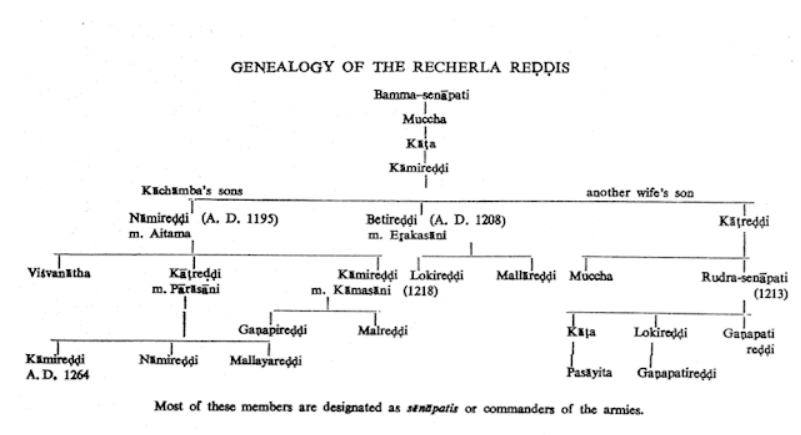
[ Source: ‘The Kakatiyas of Warangal’ by Dr. P. V. Parabrhama Sastry Published by The Government of Andhra Pradesh Hyderabad, 1978, pg (146) ]
For further reference, the charts related to the ancestry of both Recherla Bethi Reddy and Erakasni are given below.
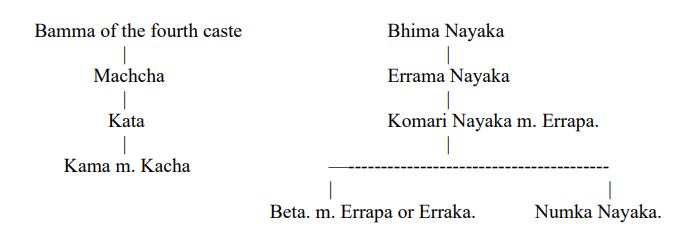
[ Source: Epigraphia Telanganica’, Volume – 2, Imperial Kakatiyas, Dr. MCRDI, Government of Telangana, Hyderabad, 2023 – KAKATIYAS AS SOVEREIGNS- Inscripn No: 88, pgs (134 TO 140) ]
Erakasani and Lord Erakesvara
The Prima focus of this article is on the Erakesvara temple in Pillalamarri. This magnificent sandstone building was skillfully created by the Sthapathis on the orders of Erakasani, wife of Recharla Bethi Reddy. As per the inscriptions discovered in Pillalamarri, the queen, Erakasani, consecrated the Siva linga in May 1208 AD ( Saka 1130, Year: Vibhava, Month: Jayestha, 3rd day of the bright fortnight, Day: Monday). 2
On this auspicious occasion, the queen endowed lands under the Laksma Samudram in Pillalamarri and other places for the establishment of mathas, and the maintenance of the temple.
On that exact day, it is also mentioned that the queen established Tripura Devi, granted land for the temple construction, and Eraka Samudram (here, samudram refers to lake) in Erkapuram (Present day: Yerkaram, Suryapet).
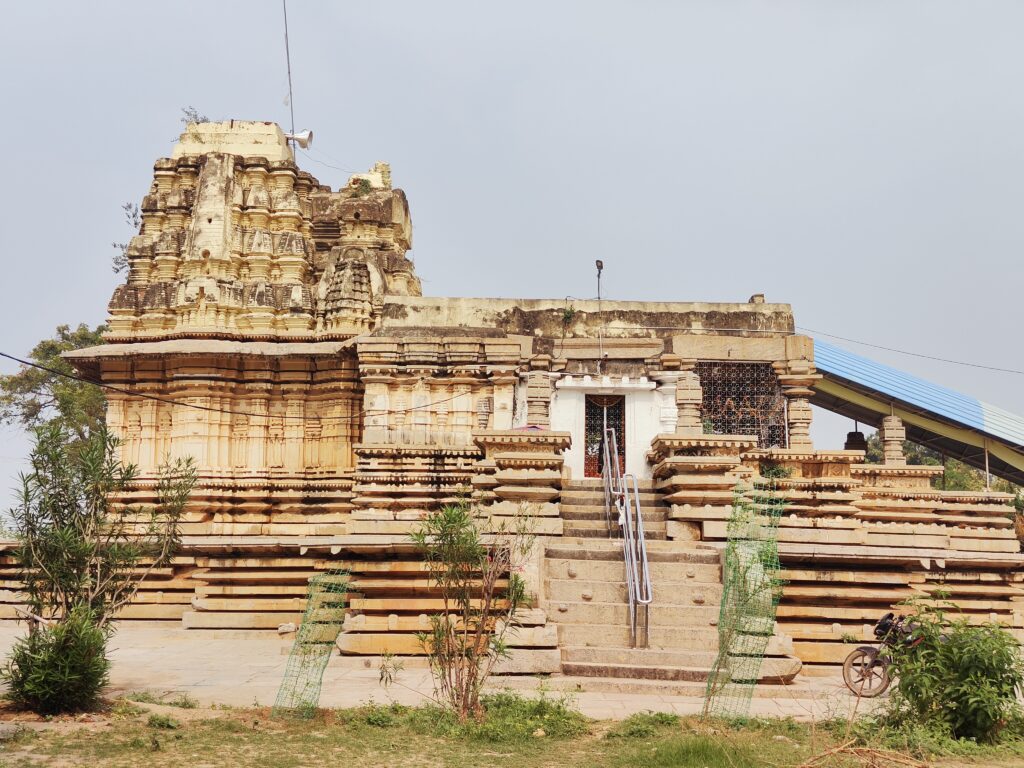
Architecture and Stories in Stone
The Bhumija style of temple architecture is employed in the construction of the Shikhara (raising tower) above the Garbhagriha. There are miniature replicas of the main Shikhara, covering the whole of the shikara. Although most of the temple is constructed with rock, the shikhara is built using brick and lime. There is a protruding structure from the Shikara known as ‘Sukanasa’, with a figurine of Nandi mounted on it. The overall design of the temple is in a cruciform shape. The temple is an Ekakuta, as it has a single shrine, and there are three entrances into the temple complex. The interior is divided into Garbhagriha (Sanctum sanctorum), Antarala, Ranga or Nritya mandapam.
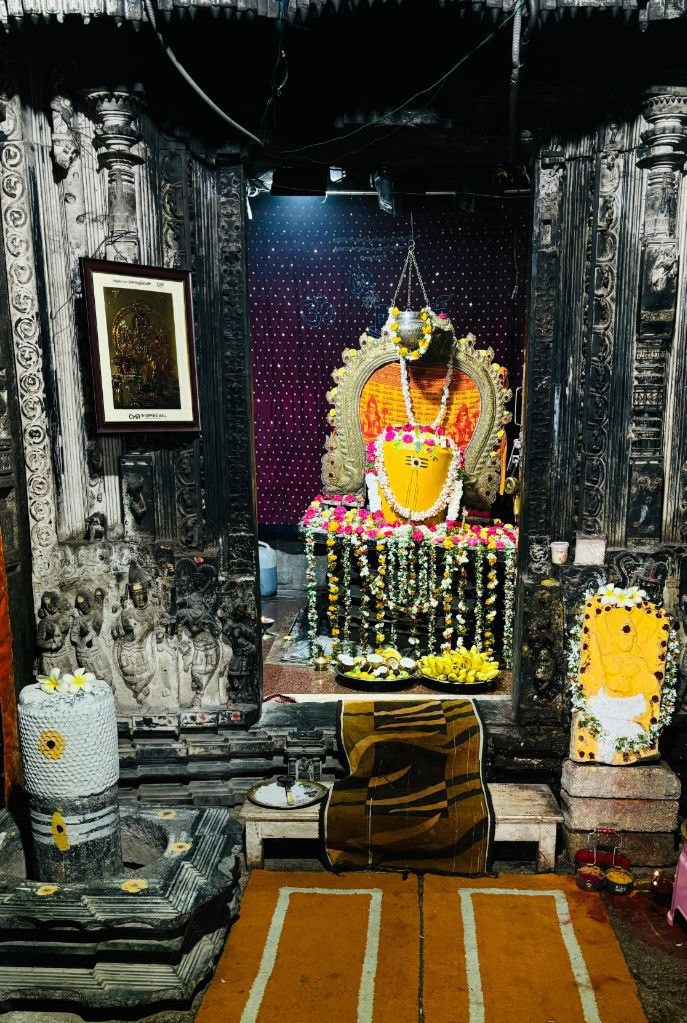
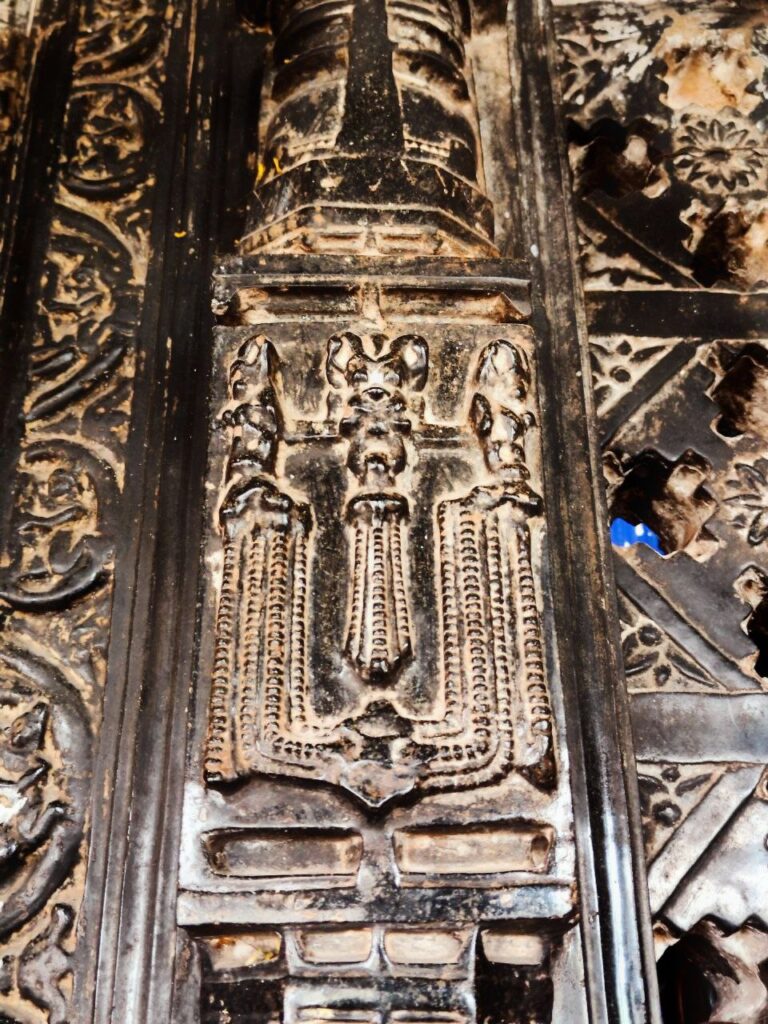
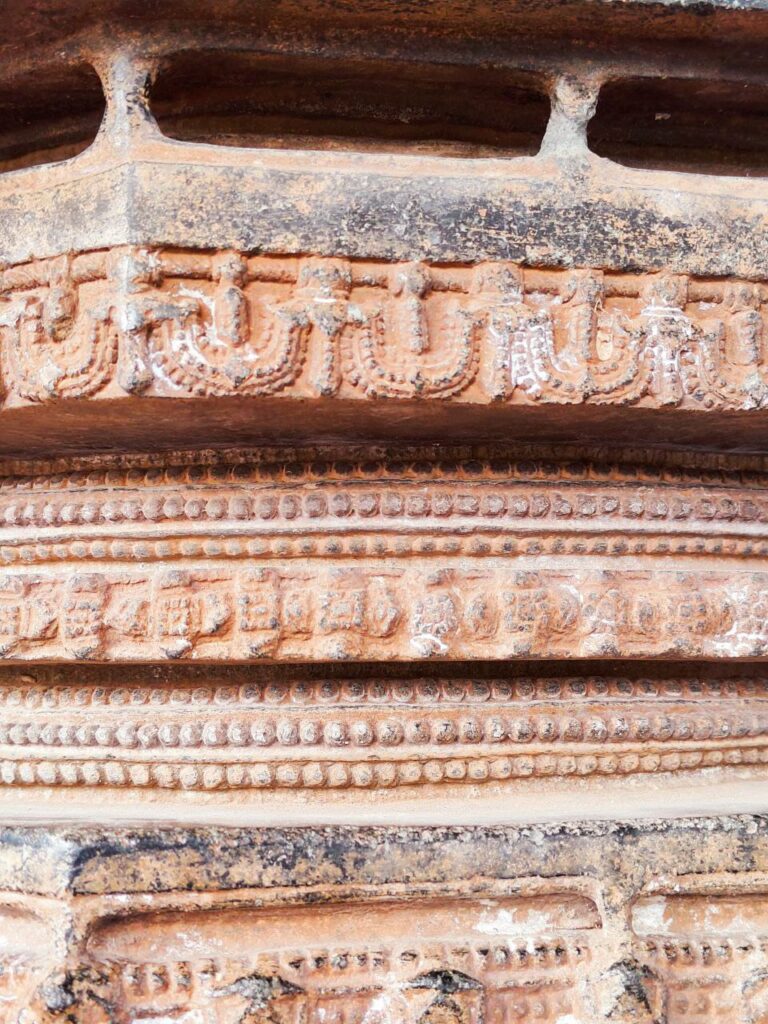
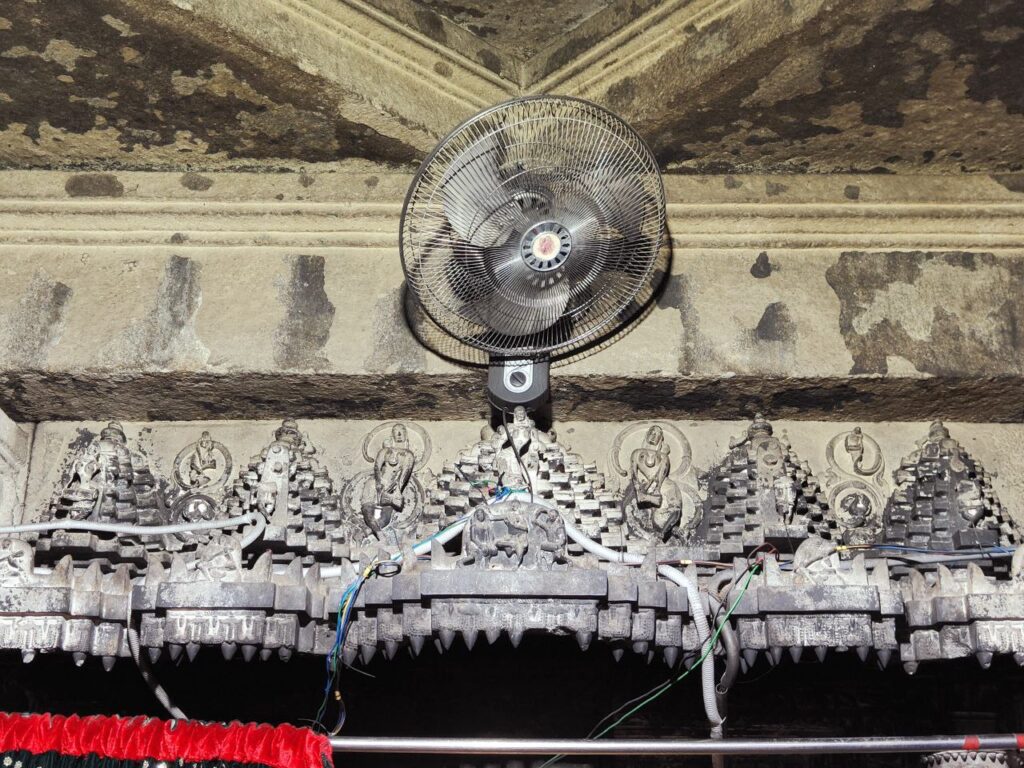
Four pillars circumferencing the Nritya mandapam have captivating carvings of dancers, musicians, keerthimukhas, and Trimurti figurines (Brahma, Siva, Vishnu) carved on the Grey Basalt pillars. These pillars are adorned with decorative carvings, adding to their attractiveness. Like in most of the Kakatiya temples, the lintel has a Gaja Lakshmi motif (present at the entrance to the Antarala) . Antarala also houses a unique Sahasra linga placed on the left side. The top portion of the door jamb on the entrance to the Garbhagriha has representations of the miniature shikharas carved on the top.
Initially, the Dwaja sthambam was absent in this temple, like most of the Kakatiya Shaivite temples. However, in 2009, some of the benefactors contributed to the establishment of Dwaja sthamba in the premises. There is an absence of Nandi ( Vahana of Lord Siva) idol in the temple.
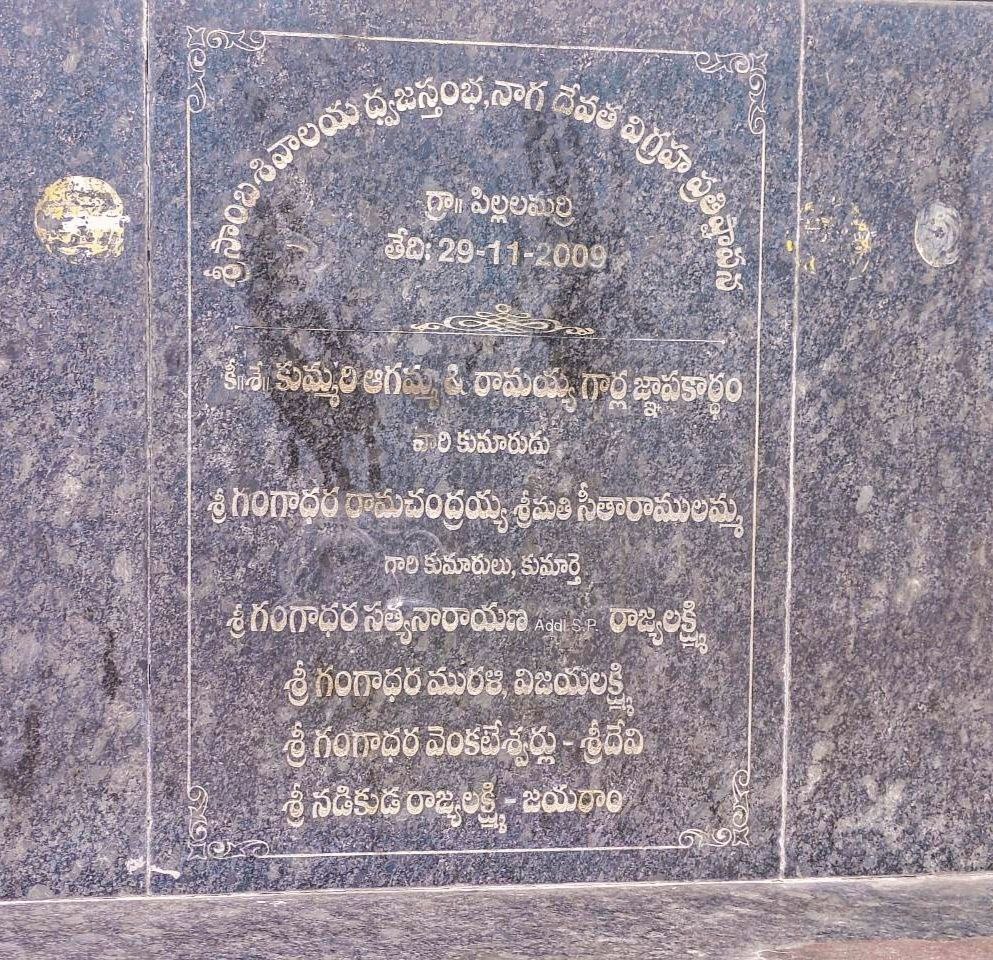
There are some small pillars present outside the temple, on the Pradakshina Patha. These are decorated with carvings of diverse animals like elephants, divine mythological swans called Annapakshis, lions; plants like creepers, and sugar cane.3
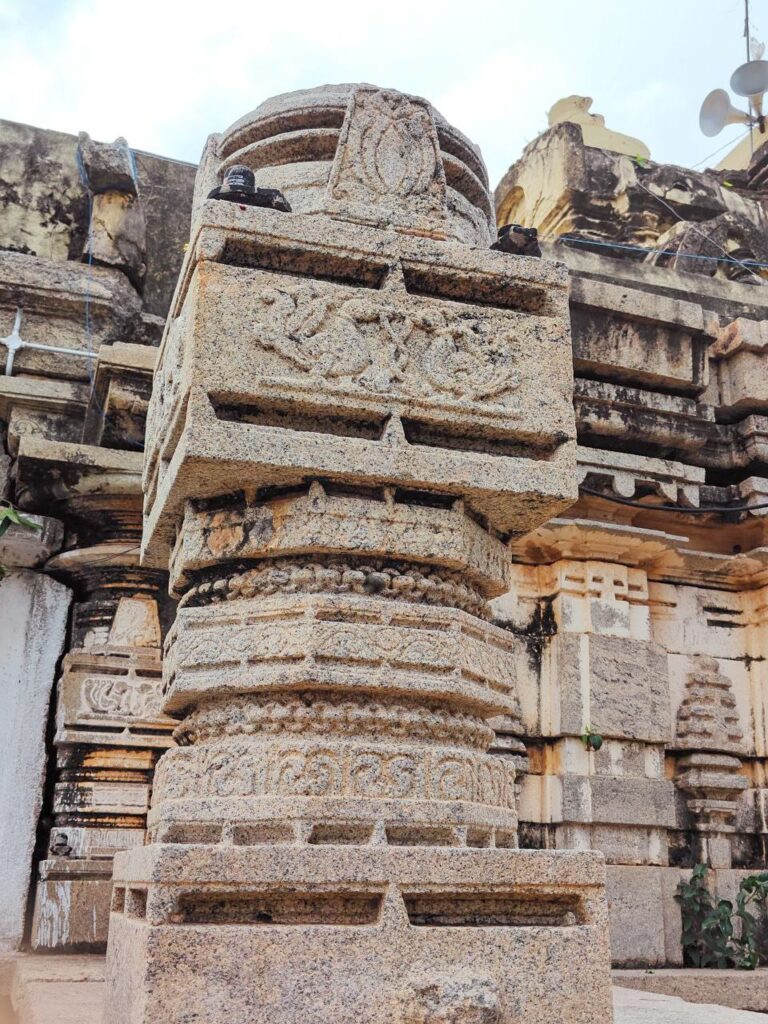
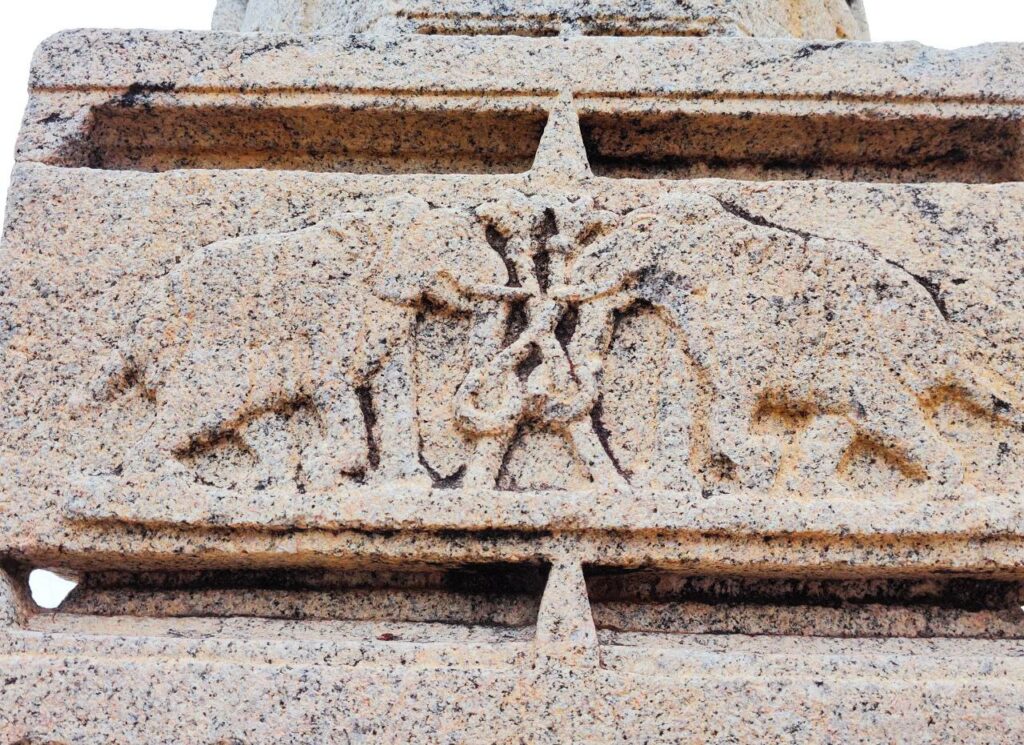

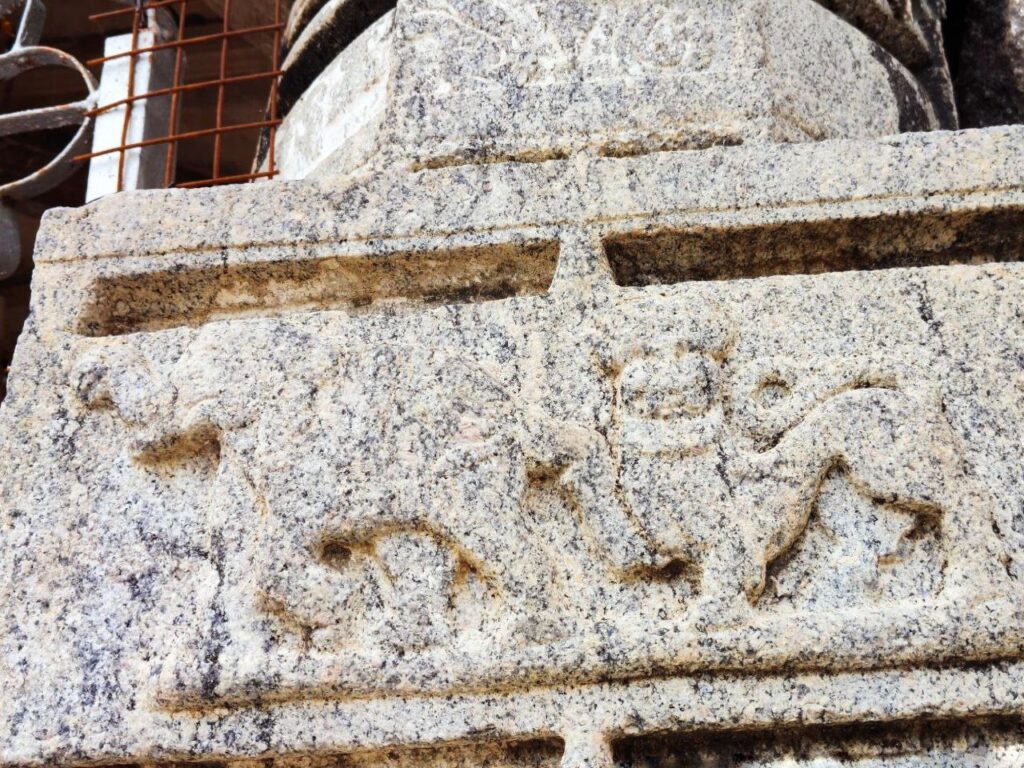
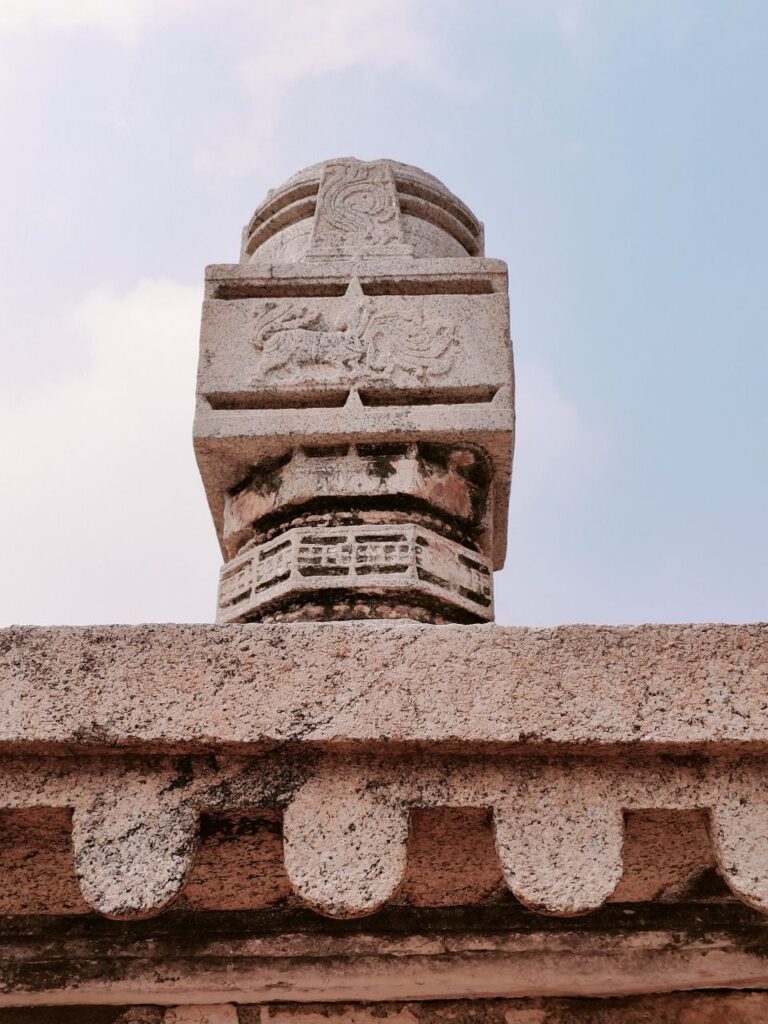
Inscription and other highlights
On the right side of the temple, there is an anthill surrounded by stone slabs. As per the sources, this anthill seems to be ancient as well. According to the Archaka (temple priest), recently, the local Muslim community in Pillalamarri, Suryapet, built a shrine for the Siva Linga, which was excavated from a nearby place. At the entrance of the temple, there is a cuboidal-shaped inscription that features the script and bears the motifs of Lord Ganesha, a cow and calf, and the sun and moon. The inscription describes the contribution of Queen Erakasani in the construction of the well, during the establishment of Lord Erakeswara. One can still find the well at the entrance to the temple, covered with a large circular cement plate.
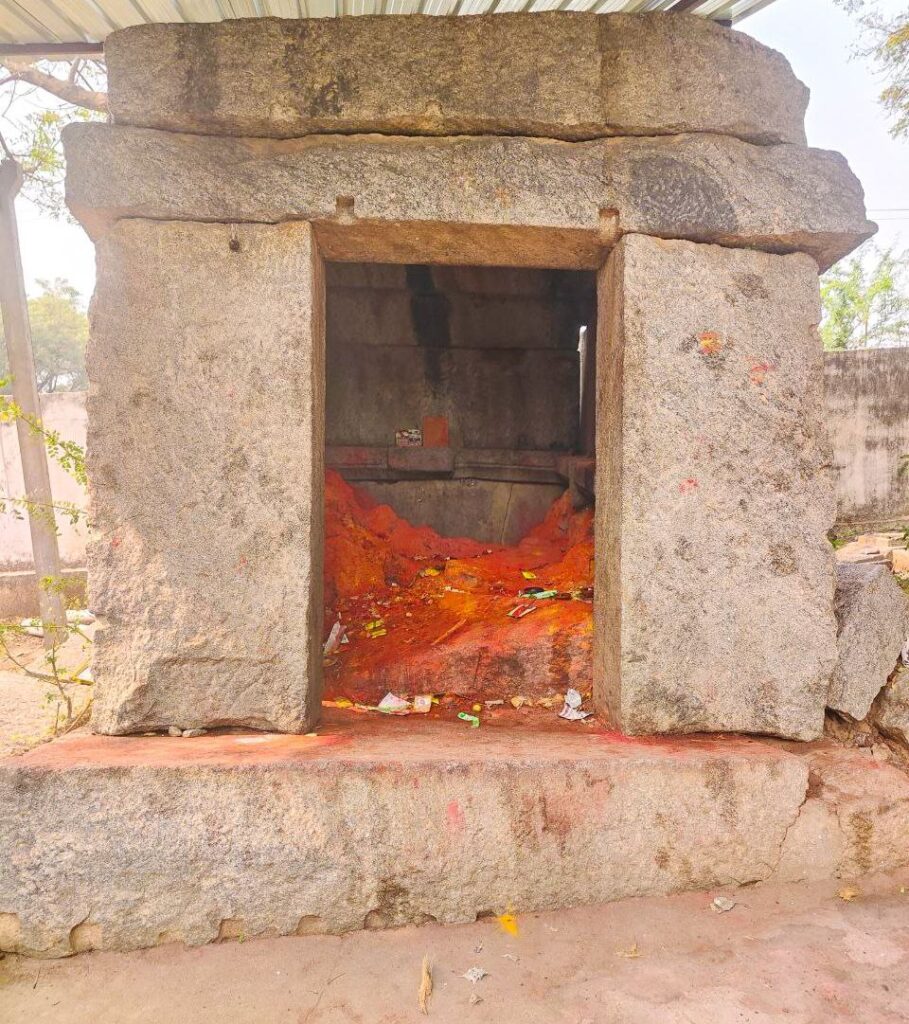
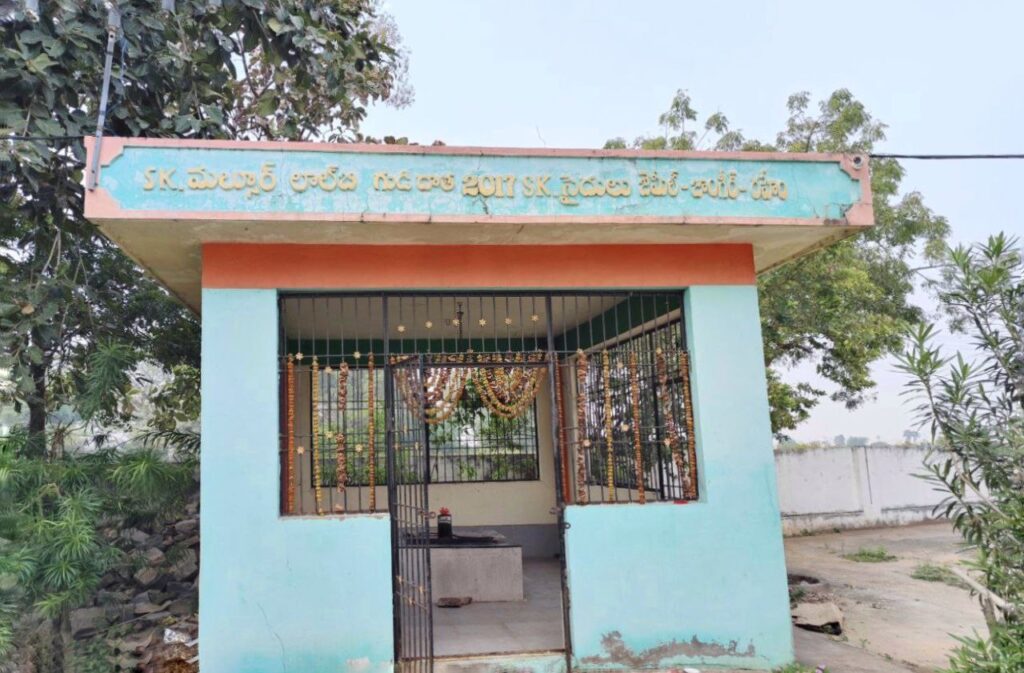
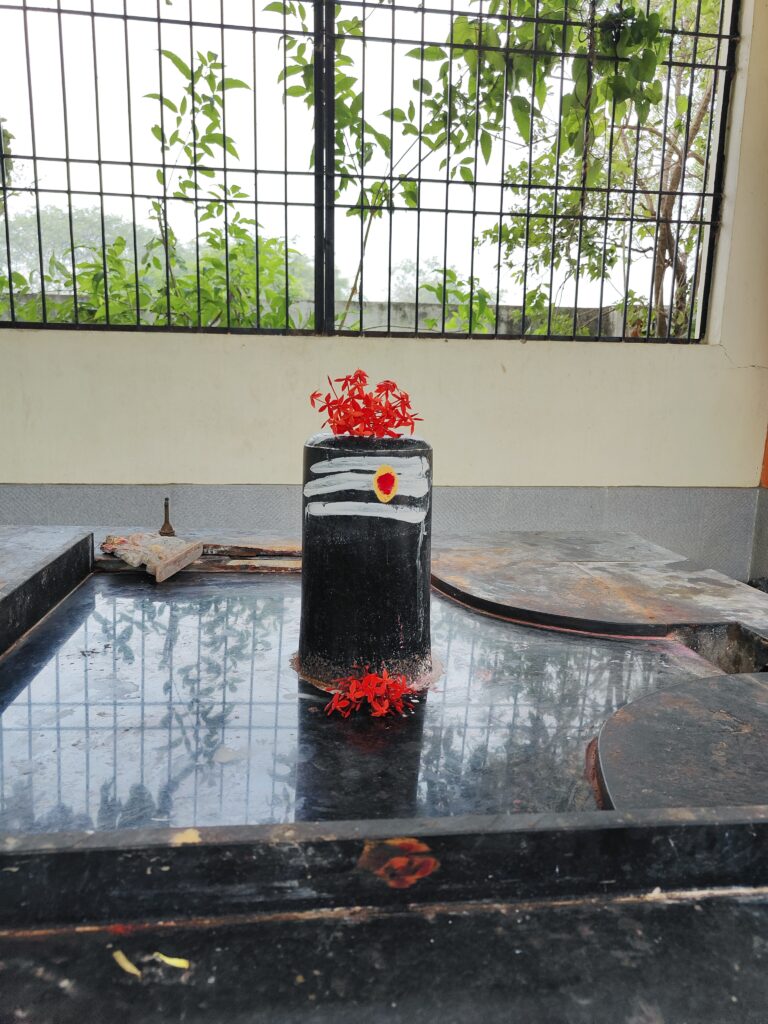
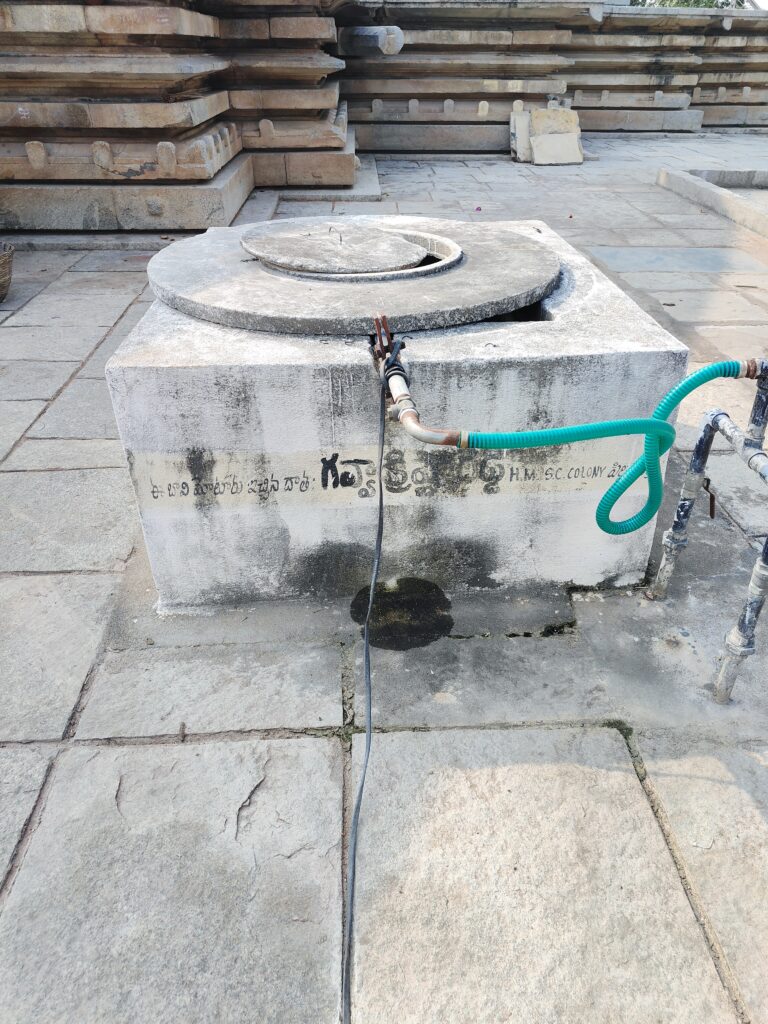
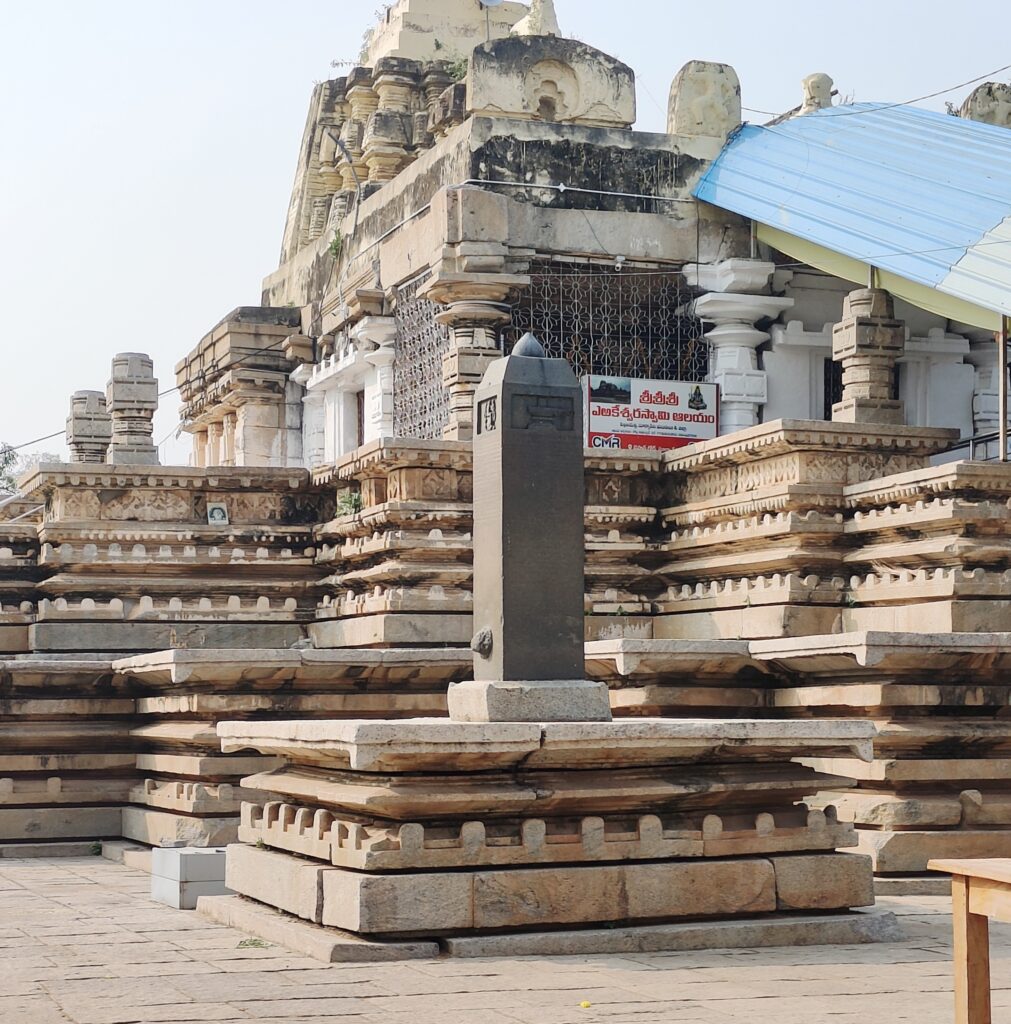
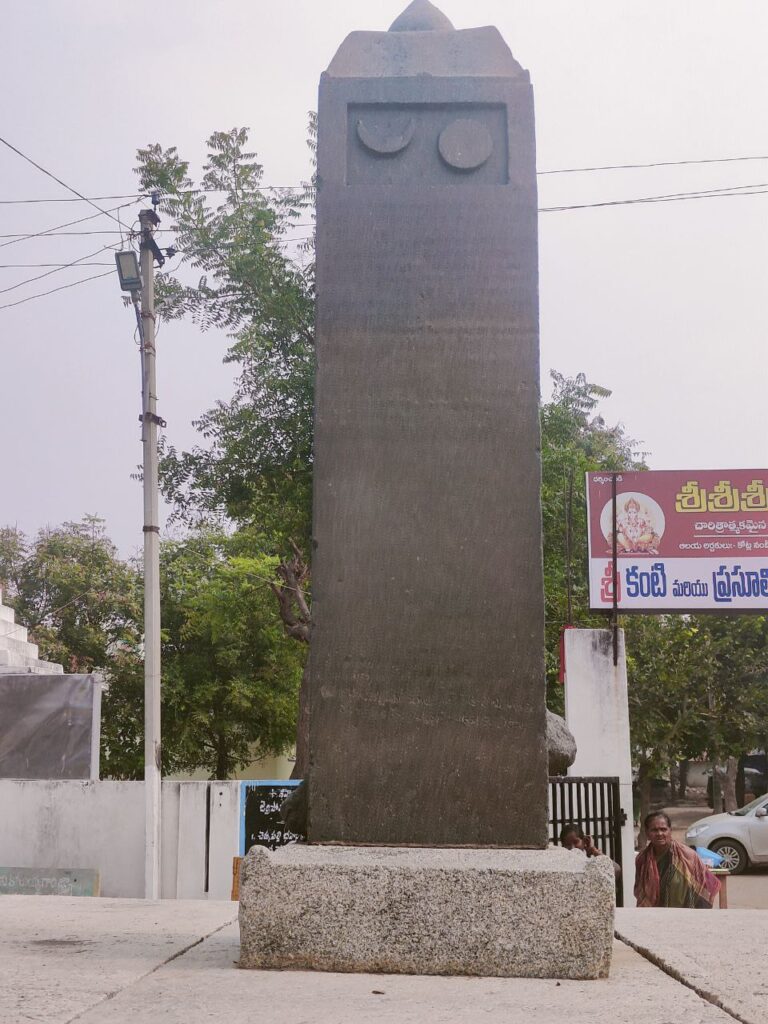
Hints at Sand-box Technology
Most people are aware of the Sand-box technology implemented in the construction of the prominent Ramappa Temple. The same technique might have been employed to strengthen the foundation of this structure. While circumambulating around the temple, one can spot the sand deposits at the base, which might have been caused by ants or other insects digging.

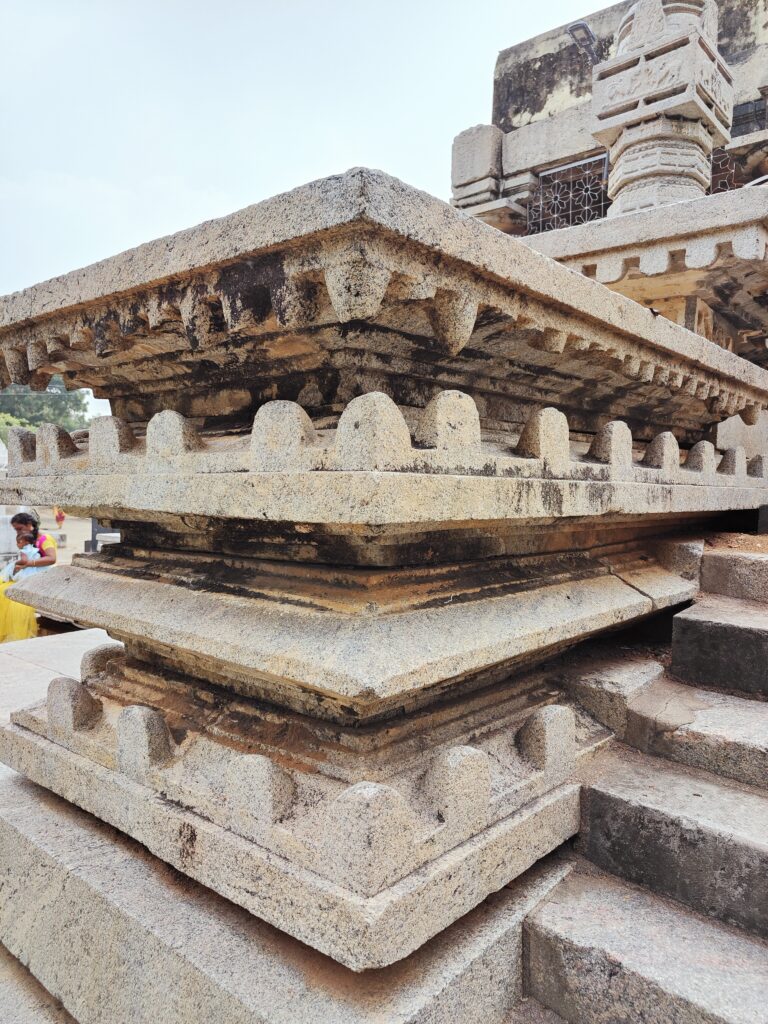


Other temples in Pillalamarri
As per the other inscriptions found in Pillalamarri, there are also some other temples established by the queen Erakasanamma. Komareswara and Erakesvara shrines were established by the queen, named after her parents Komari Nayaka (father) and Errapa (mother). It is also mentioned that Imaturi Somaya established Lord Betesvara, on the orders of Lord Erakasani. At present, we cannot see any of these temples present in the village. It’s possible that these temples can no longer withstand the test of time.4
Monastery and Students
Inscriptions also cite that Queen Erakasani granted funds for the construction of the monastery. The arrangement and accommodation for the cooks and clothing for students were also mentioned.5
Invasion, Vandalism and Reinstallation
These sacred places were subjected to an attack by the Ala-ud-Din Hasan Bahman Shah, resulting in the vandalism of the beautiful carvings, idols, and the temple itself. According to Dr. S.A.Q Husaini’s book, ‘Bahman Shah: The Founder of the Bahmani Kingdom’ , Ala-ud-Din Hasan launched 5 campaigns between 1352 A.D and 1359 A.D. The third expedition was carried out by him, in Telangana. It might be around this time that Bahman Shah led an invasion in Telangana and vandalized the temples in the region. An inscription found in the temple of Pillalamarri details the reinstallation/reconsecration of the Siva linga, also known as Lord Erakesvara, in the year 1357 A.D, by Erapotu Lamkam (garu). He was the governor of Pillalamarri ( post the rule of the Kakatiya dynasty), and was a subordinate of Kapaya Nayaka. During the reinstallation, Erapotu granted land to the Lord Erakesvara, for the merit of his father, mother and his chief Kapaya Nayaka.6
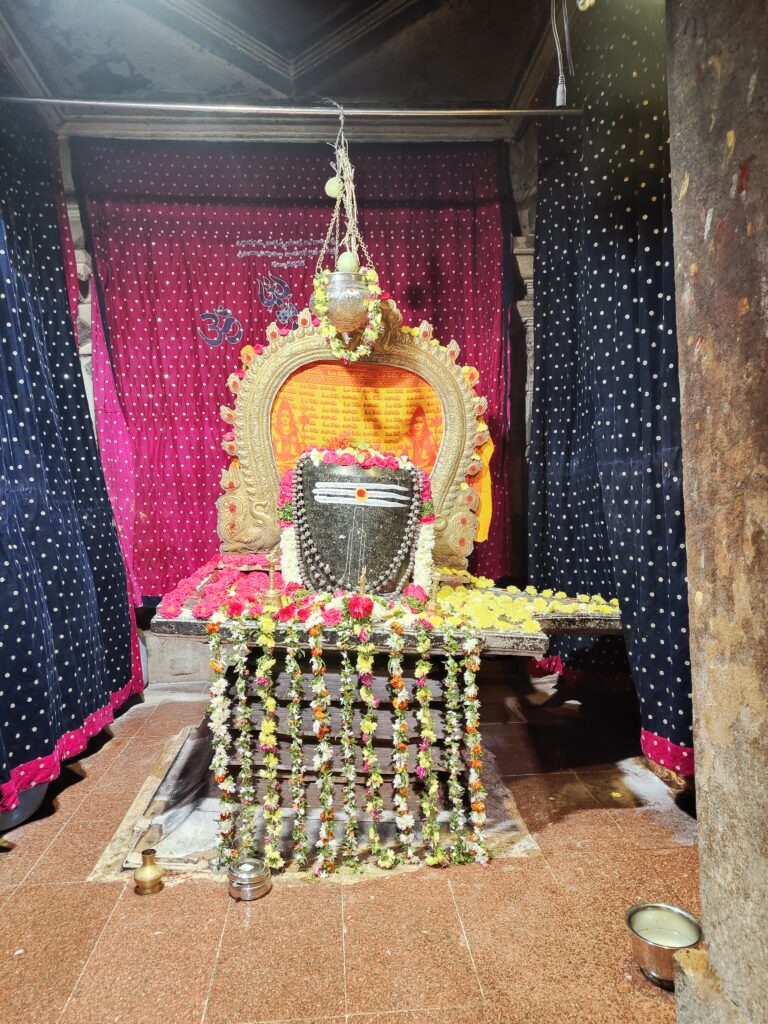
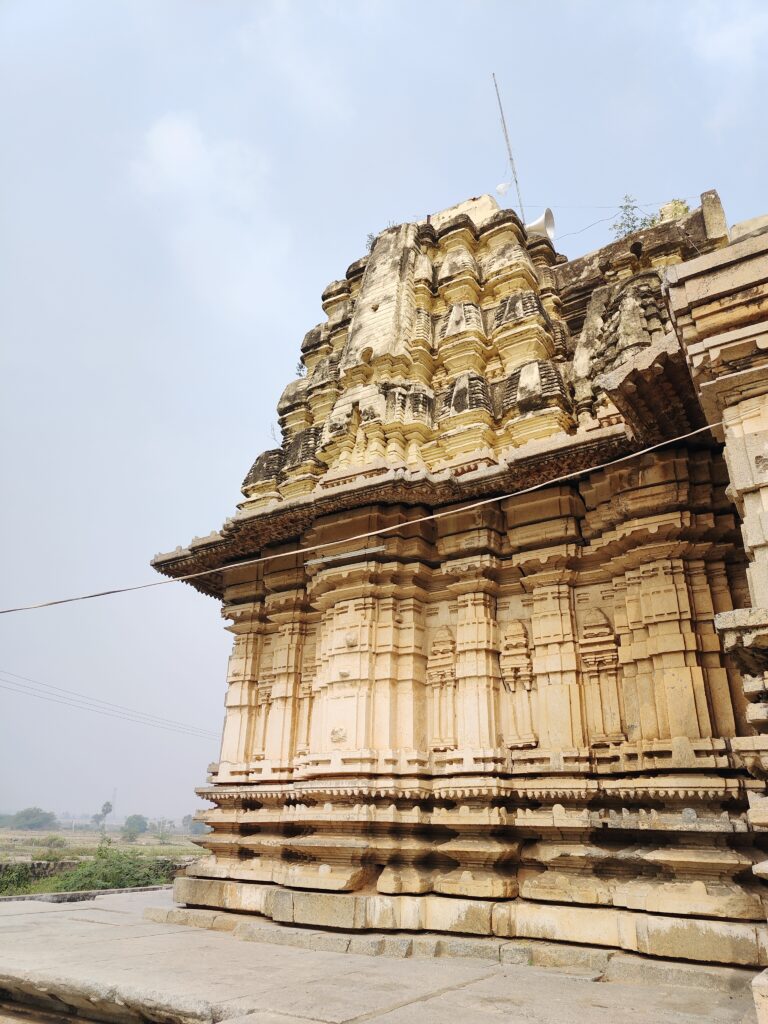
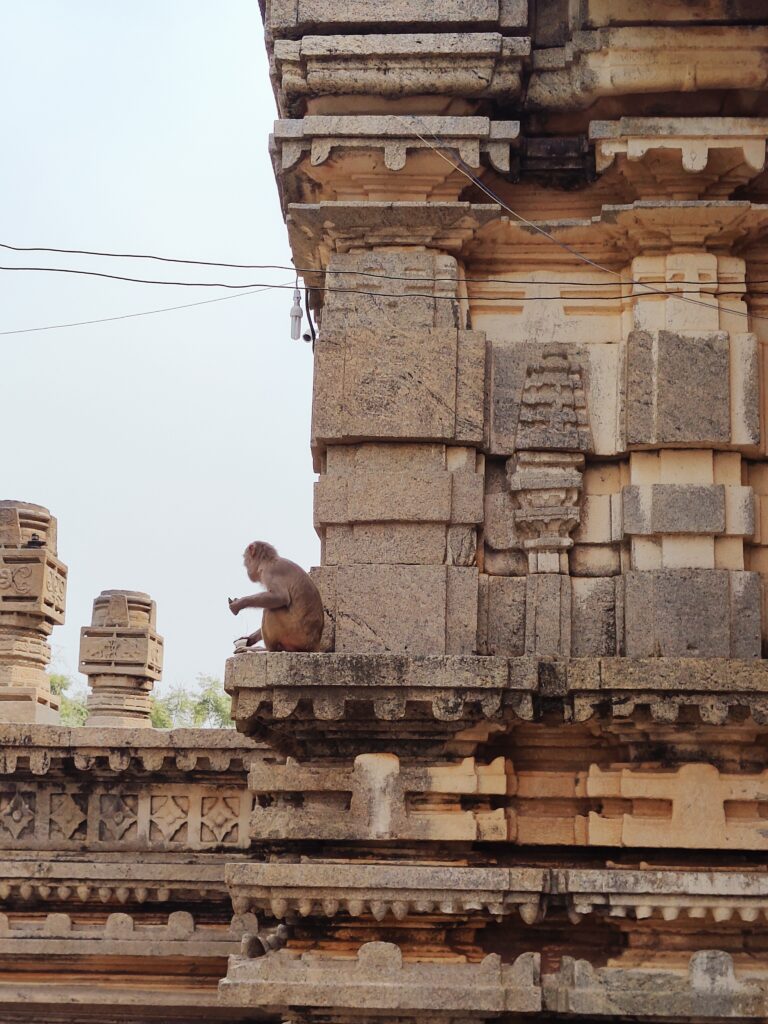

This temple is one of the ancient temples of the Kakatiyas. Unfortunately, not many people know about it or its history. This temple is under the protection of the Telangana State government and needs proper promotion to attract more visitors from various places to the heritage structures in Pillalamarri.
I would like to express my gratitude to Dr D Surya Kumar for his guidance, and for providing useful information.
Location of the temple: Pillalamarri Village, Suryapet District, Telangana, India
5H9J+WV2, Pillalamarri Rd, Pilalamarri, Pillala Marri Rural, Telangana 508376
© Pictures- Dasi Yoga Rakshitha
Bibliography:
- [ Source: Inscriptions of Andhra Pradesh, Nalgonda District
Volume-I (1992) and Epigraphia Telanganica’, Volume – 2, Imperial Kakatiyas, Dr. MCRDI, Government of Telangana, Hyderabad, 2023. KAKATIYAS AS SOVEREIGNS- Inscripns No: 113, 114, pgs (158, 159); INDETERMINATE INSCRIPTIONS No: 39, pg (374) ] ↩︎ - [ Source: Based on Inscriptional evidences- Inscriptions of Andhra Pradesh, Nalgonda District
Volume-II (1992). ‘Select Kakatiya Temples’ by Dr. M. Rama Rao Published by Sri Venkatesvara University, Tirupati 1966, (pg 91). ‘Temples of Telingana’ by M. Radha Krishna Published by The Government of Andhra Pradesh and UGC, 1972 (pg 100) ] ↩︎ - P. Naresh & K. Vijaya Babu 2022. Bio-Diversity as Reflected on the Erakeswara Temple at Pillalamarry in Nalgonda District. Journal of Archaeological Studies in India, 2: 2, pp. 67-72. https://doi.org/10.47509/JASI.2022.v02i02.01 ↩︎
- [ Source: Based on Inscriptional evidences Inscriptions of Andhra Pradesh, Nalgonda District
Volume-II (1992). ‘Select Kakatiya Temples’ by Dr. M. Rama Rao Published by Sri Venkatesvara University, Tirupati 1966, (pg 91). ‘Temples of Telingana’ by M. Radha Krishna Published by The Government of Andhra Pradesh and UGC, 1972 (pg 100) ]
↩︎ - [ Source: National Institute of Indian Medical Heritage, SAHI Portal, 24. Kakatiya Inscription-3, Location: Pillalamarri,Suryapet Taluk,Telangana State ] ↩︎
- ‘Bahman Shah: The Founder of the Bahmani Kingdom’ by Dr. S.A.Q Husaini (Book) Chapter 7 BAHMNA’s CONQUEST, Firma K L Mukhopadhyay, 1960 – pgs (107 TO 110) ↩︎
- ‘Select Kakatiya Temples’ by Dr. M. Rama Rao (Book)
- ‘Temples of Telingana’ by M. Radha Krishna (Book)
- ‘Epigraphia Telanganica’, Volume – 2, Imperial Kakatiyas, Dr. MCR Human Resource Development Institute, Government of Telangana, Hyderabad, 2023.
- International Journal of Recent Advances in Multidisciplinary Topics, VOL. 2, NO. 10, OCTOBER 2021 The Recherla Reddy’s Temples of Pillalamarri (Suryapet District) by Narasaiah Barigala
- ‘The Kakatiyas of Warangal’ by Dr. P. V. Parabrhama Sastry Published by The Government of Andhra Pradesh Hyderabad, 1978 (Book)
- ‘Bahman Shah: The Founder of the Bahmani Kingdom’ by Dr. S.A.Q Husaini (Book) Chapter 7 BAHMNA’s CONQUEST, Firma K L Mukhopadhyay, 1960 (Book)
